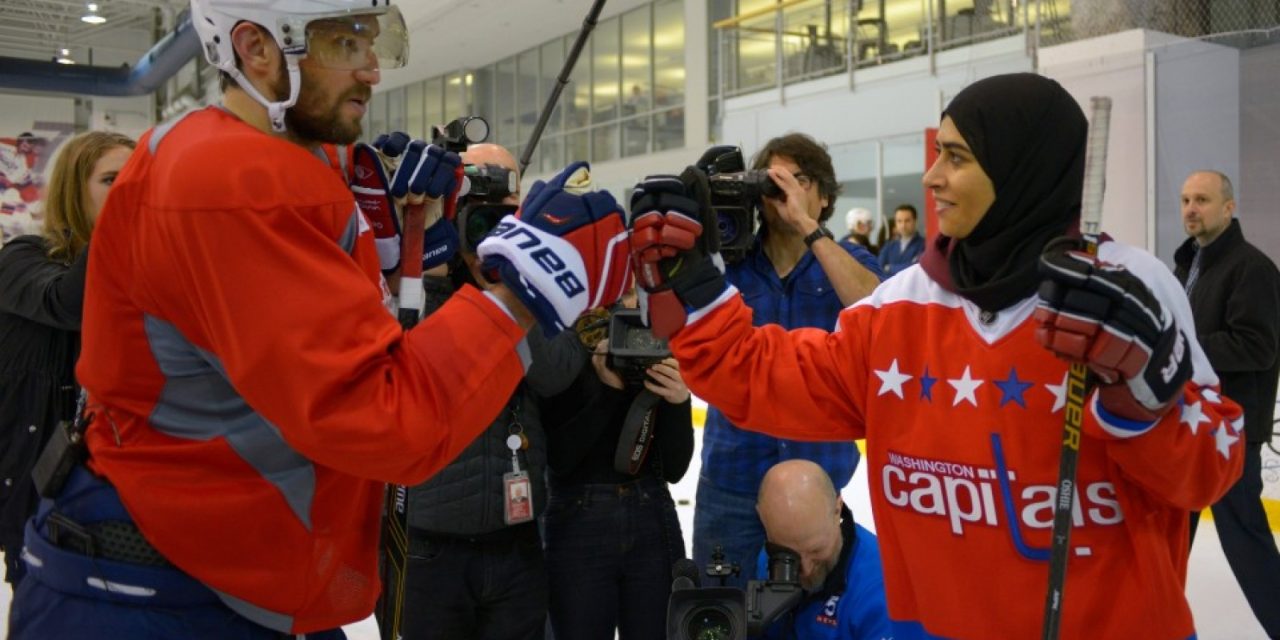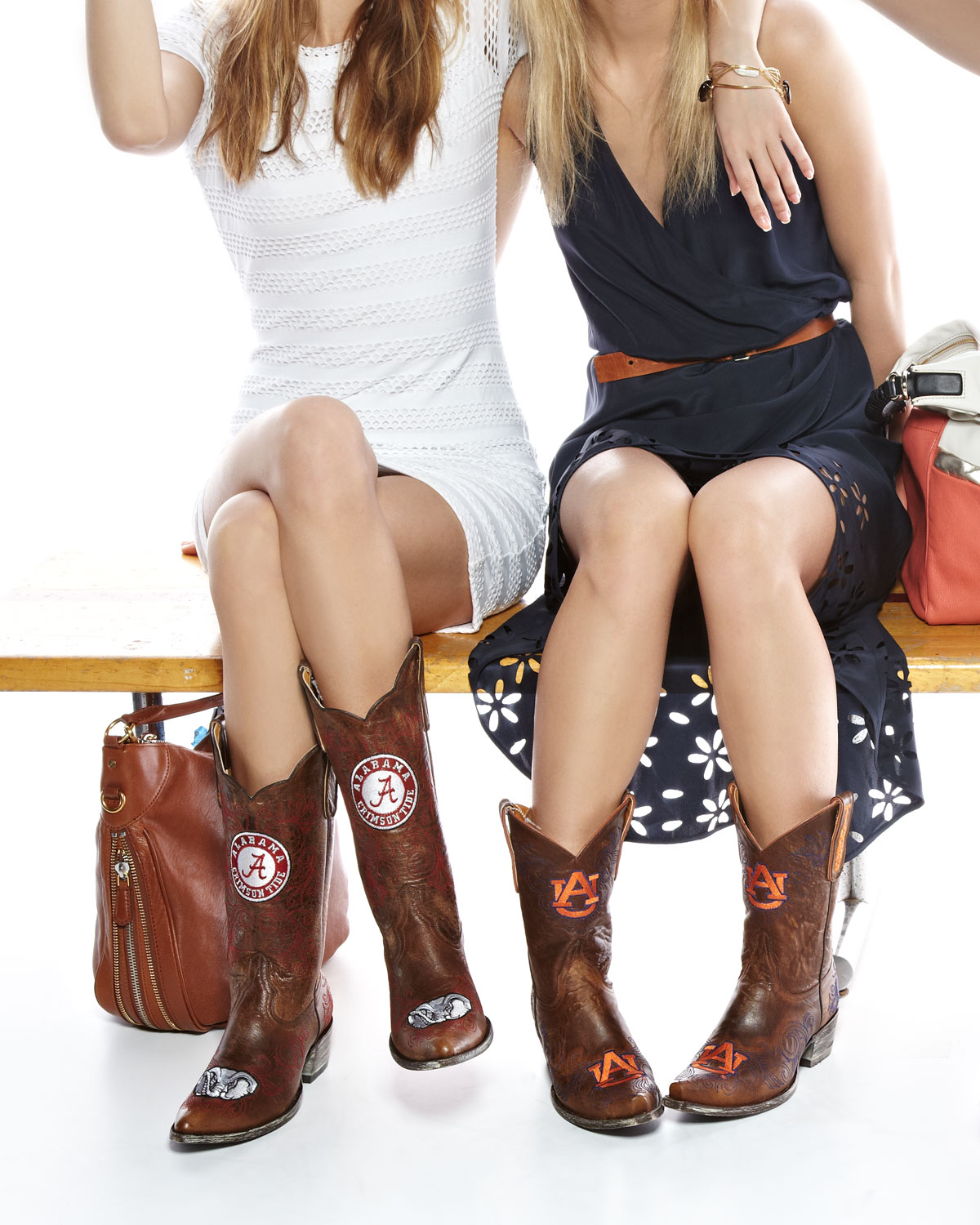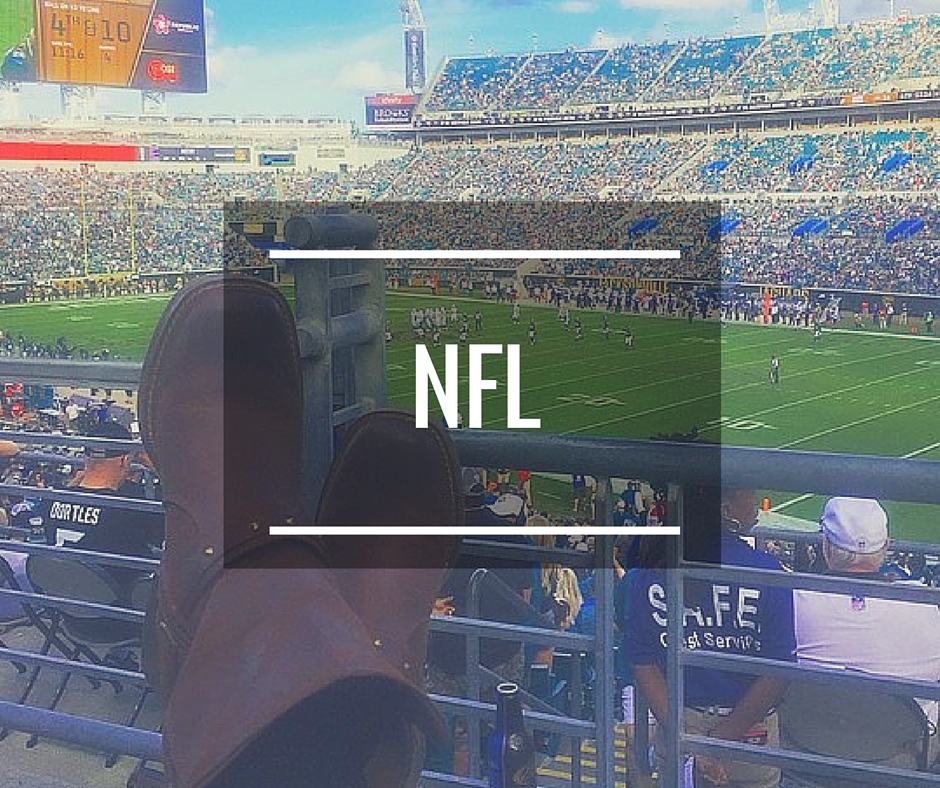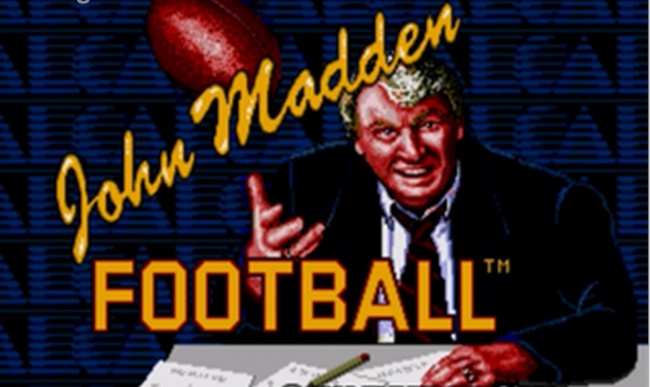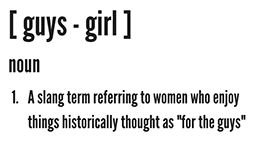It’s mid-February, and Hockey is for Everyone month is in full swing. NHL teams are hosting Pride Nights left and right, You Can Play ambassadors are speaking out in support of the LGBTQ+ community, the Washington Capitals welcomed a hijabi woman – UAE hockey player Fatima Al Ali – into their ranks for a few days, and it’s an all-around positive and welcoming time for fans and the hockey community as a whole.
It’s hard to place a value on events like Hockey is for Everyone month, which to some might feel gimmicky, or another way for the NHL to draw crowds to games. But for countless hockey fans, it’s about feeling welcome in a community that has too often overlooked its female, POC, and LGBTQ+ fans.
Representation, inclusion, and diversity are words that get thrown around a lot in online discourse, but that’s because they’re worth using.
I can’t state enough how important representation means for even me, a white woman, so I can’t begin to imagine how important it was for women of color to see Fatima Al Ali perform a ceremonial puck drop at an NHL game. I can’t fathom how inspired queer hockey fans must have felt to see transgender hockey player Harrison Brown honored at a Buffalo Sabres game.
While these are monumental steps that deserve recognition, there’s so much more work to be done.
The NHL still has a predominantly white fan base of any professional sport at about 92%, with only 35% of its fans identifying as female. That’s a lot less than the 51% of women in the United States who, according to a 2015 Gallup poll, identify as sports fans.
Instead of tackling the reasoning behind the NHL’s homogeneous fan base, which could be explained in a separate novel-length piece about hockey culture, I want to look at ways the NHL can reach out to more potential fans. The way I see it, either the NHL can go on sticking to the status quo, focusing on diversity and inclusion for one short month every year, or it can take steps internally and externally to create and foster welcoming spaces for women, POC, and the LGBTQ+ communities all year round, starting with these five changes.
1. Player Education
Meaningful change starts from the inside, at an individual level. In order for the NHL to reach its potential as a forward-thinking league with an inclusive fan community, everyone involved in the NHL, especially the players, need to get on board the Change Train. The League isn’t completely oblivious when it comes to player education, as we’ve seen with the You Can Play ambassadorships this month. There’s also “sensitivity training,” which is often included as part of its disciplinary action for players who engage in offensive behavior. Forward Andrew Shaw, a Chicago Blackhawk at the time, learned this first-hand after using a homophobic slur in a game during the 2015-16 season. The League didn’t quite turn a blind eye; he was suspended for one game, fined, and made to undergo sensitivity training. But why is this kind of blatant homophobia still occurring, and being treated so mildly, even in the year 2016?
Instead of punishing this kind of behavior with a one-game suspension after the fact (which, many fans argued, was not punishment enough in Shaw’s case), the League needs to focus on prevention and education among the ranks of its players. Imagine if the NHL required every team roster to engage in regular educational workshops on how to be an effective ally. You’re still gonna get bad eggs every once in a while, but the degree of ignorant outbursts could be reduced significantly.
As a result of thoughtful education, players are going to be more likely to hold each other accountable, and considering how tight-knit the hockey community is, that’s not something to scoff at.
If Shaw had known in the back of his mind that his teammates would call him out for using homophobic slurs, if he had been educated on how harmful this kind of language can be – for fans and his teammates – maybe he would have used a regular old run-of-the-mill F-word instead.
Shaw may not be a bad dude at heart, but his comment came from a place of ignorance. Players like Shaw represent the NHL, and the League needs to educate its players. In doing so, the League holds itself accountable.
2. Cancel Patrick Kane (and Others Like Him)
We’re all familiar with the story: Patrick Kane, star player for one of the most recognizable and widely-promoted NHL teams, the Chicago Blackhawks, was involved in a sexual assault case in 2015. Ultimately no charges were brought against him, and after a few months of “lying low” on his bed of millions, Kane’s career continued as if nothing had happened. Later that very season, he won the Hart Memorial Trophy for League MVP. Drew Doughty of the Los Angeles Kings was involved in a similar case back in 2012 – he was accused of assault, the investigation was dropped with no charges, and he went on to win the Norris Trophy years later. Both Kane and Doughty appeared at the 2017 NHL All-Star Game.
So what does this say to female hockey fans? To survivors of sexual assault? The NHL may as well roll out a massive sign that reads, “We Don’t Care About Women That Much LOL.” It’s unacceptable that organizations like the Chicago Blackhawks are happy to allow accused rapists to play for them, even if it makes sense from a business standpoint. After all, no charges were brought against Kane or Doughty, and both players are invaluable to the success of their teams. But guilty or not, it’s irresponsible of the League to continue featuring Kane in advertisements, name him MVP, and send him to fan events like the All-Star Game. It forces women, including survivors of sexual assault, to not only be inundated with the face of an accused rapist but to see him celebrated and praised by the NHL. It’s not even a little bit surprising that many women would rather quit watching hockey altogether than engage in a sport that willingly maintains a hostile environment for its female fans.
What can the NHL do, you ask?
It can, and should, enact a zero tolerance policy for accused sex offenses and offensive behavior, whether those offenses are in the form of misogyny, homophobia, racism, or otherwise.
I’m talking multiple games’ suspension, removal from events like the All-Star Game, ineligibility for post-season awards, and no further participation in promotional materials for the League. It sounds extreme, but that’s the point. The League needs to send a loud, clear message that it cares about its female, LGBTQ+, and POC fans and that it won’t enable behavior from its players who send a conflicting message.
3. Spotlight Players of Color
Representation matters. In no sport is this more obvious than the NHL, the whitest of professional sports. With roughly 93% of its players identifying as white, it’s going to be difficult – if not impossible – for children of color to find any player, let alone one on their favorite team, who looks like them. Kids have the right to grow up knowing they can play whatever sport they want to play, and representation plays a huge role in that.
So what needs to change?
The NHL needs to spotlight players of color. Players like P.K. Subban and Auston Matthews receive a lot of media attention within hockey circles, but the League is notoriously averse to treating any of its players as “stars,” and that needs to change.
Not for the growth of hockey itself, but for the kids watching who deserve to see themselves represented in the sport. When children see themselves in media or as powerful figures, they internalize it. If a Mexican kid sees Auston Matthews playing hockey – a rookie sensation of Mexican descent – it sends a message that they, too, can be a pro hockey player.
The problem here goes beyond putting players of color front and center. It’s a many-layered issue with countless causes and solutions. For instance, without mainstream promotions featuring players of color, how is the NHL going to reach children who may not otherwise be interested in hockey? The most popular sports channels in the United States don’t show hockey; ESPN doesn’t know hockey exists, and NBCSN occasionally broadcasts hockey, but it’s so infrequent it verges on novelty.
I don’t know how the NHL can fix this specific issue (my solution would be to call up ESPN and yell at them), but it’s a problem that should be addressed and resolved. More and more pro hockey players are coming from the United States, and the League has a responsibility to reach out to young Americans who may be the future of the sport. The NHL needs to advertise itself, and in a way that speaks to children of color. Until then, hockey will continue to be the Whitest Sport Ever, to its detriment.
4. Prioritize Inclusive Events
We’re all familiar with hockey theme nights. If you’re not, these are special even nights put on by NHL teams to drive fan engagement, enthusiasm, and ticket sales. For example, there’s Military Night, Star Wars night, and some teams even have Video Game Night. Most importantly, Pride Night has been implemented by an increasing number of teams in the NHL. Pride Nights take place during Hockey is for Everyone Month, in partnership with You Can Play, a program that works to combat homophobia in hockey, and to foster a more inclusive and supportive environment for LGBTQ+ players and fans. You Can Play and Pride Nights are a huge step in the right direction and give me hope for the future of hockey. The NHL should use Pride Nights as a jumping off point, and implement more such events to reach out to a more diverse array of fans.
As an example, the League can start by revamping Hockey and Heels, a special night put on by many teams that seeks to appeal to – you guessed it! – female fans. These events tend to include food, drinks, appearances from players, and crash courses in hockey basics. The concept is great. It strengthens communities of women who love hockey and sends the message that women are valued and recognized as a legitimate audience of the sport. But what’s with the fact that many Hockey and Heels nights include an explanation of hockey, as though women don’t already understand the sport? If women are paying $40 to shiver on an ice rink and meet professional athletes, you can bet they know the basic rules of hockey. I’d love to see these events revamped, starting with the name. It’s cute, but painfully gender normative.
So why not host events for women that don’t talk down to them? Host a Badass Hockey Lady Night (it’s a working title), and invite women to participate in trivia about the team instead of teaching them what icing means.
And don’t stop there! Hold workshops for women who want to be involved in hockey as a career. Teach them about broadcasting, sports journalism, hockey statistics, equipment management, whatever! Women aren’t just interested in being ice girls and hosts.
There’s nothing wrong with either of those professions, but imagine if the NHL made an effort to encourage and support women who want to pursue a career in the world of hockey.
Pride Nights are a significant step on the road to a more inclusive NHL, but they’re just the beginning. The League owes it to its fans to host more, and better, inclusive events throughout the season.
5. Lead by Example
Diversity and inclusion doesn’t solely benefit fans. Sure, most professional hockey players right now are white, and every hockey player in the NHL presents as male. But imagine being a pro hockey player. Imagine the pressure players must feel to keep their sexuality and identities hidden in a League that overlooks and excuses homophobic, racist, and misogynist behavior. The culture of pro hockey is inherently hyper-masculine, existing in a bubble of isolation from the rest of the world. Not only should players be educated on behavior to promote inclusion for fans, but for each other. Slurs like the one used by Andrew Shaw shouldn’t be normalized. Players should be held to higher standards, and they should feel safe speaking out and holding each other to those standards.
Meet Brad Marchand. He’s a star player for the Boston Bruins, scored the game-clinching goal for Team Canada in the World Cup of Hockey in 2016, and is known as an on-ice pest. He may aggravate opponents on the ice, but off the ice, he’s proven himself to be a strong voice on the side of Good. When an irate fan tweeted at him using a homophobic slur, Marchand didn’t stand for it. He called out the fan publicly, causing the fan to delete his own account.
Marchand later told the press:
“I want to stand up for what I believe in, and I don’t think it’s right when people say things or bash people because of their sexual orientation.”
This may seem like a small act, but it meant a lot to queer hockey fans to see a player speak up against homophobia.
Brad Marchand sets an example for not only players and fans, but for the NHL as an organization. He has a zero tolerance policy in his Twitter mentions. So why shouldn’t the League follow his lead?
‘Five Ways the NHL Can Make the Hockey World a Better Place’ is written by the talented Meg Smitherman. Check out more of her work on Twitter.
Featured photo via John McDonnell/The Washington Post

